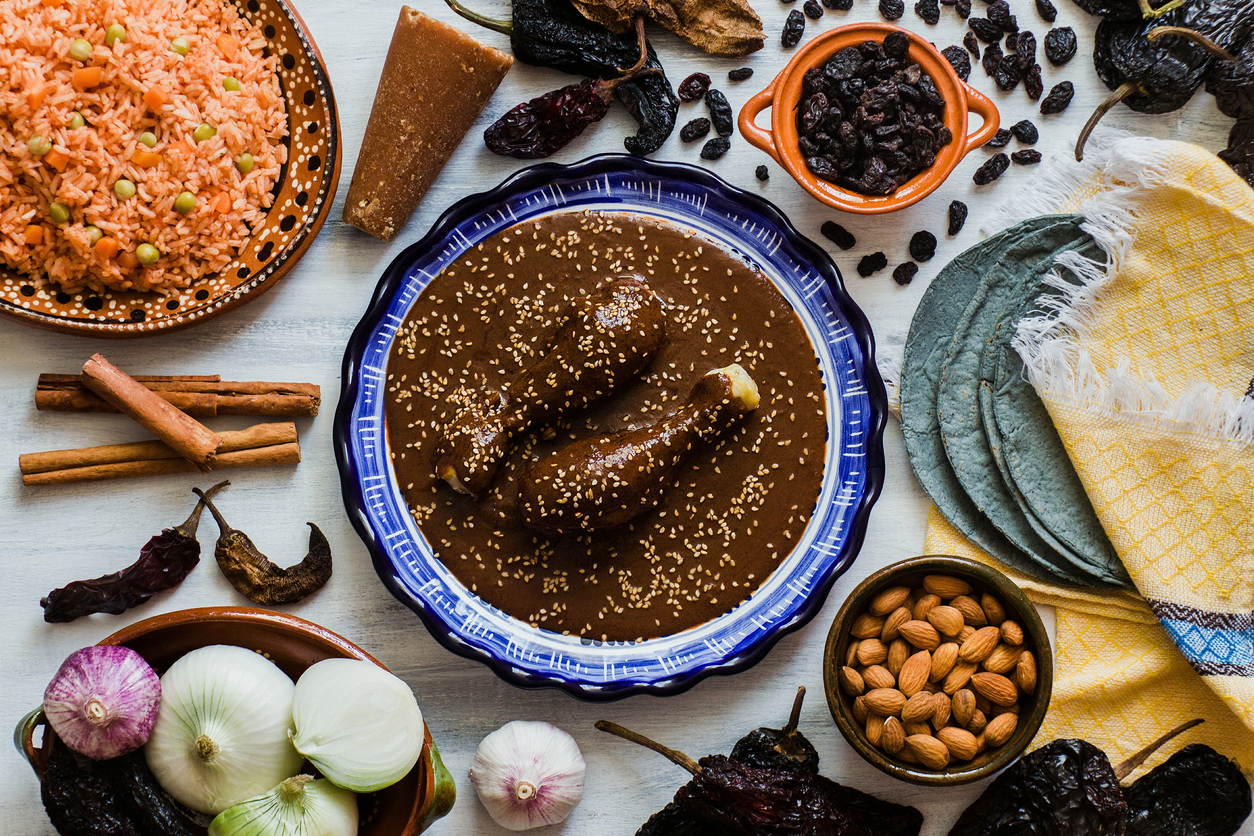IT WOULD BE AN understatement to say that food is important in Mexico. Mexican cuisine is known worldwide for its distinct flavors, thick aromas and also for the vibrant colors of our dishes. Traveling to the various regions around the country reveals culinary differences in flavors and ways of preparation and presentation. We are so protective of our food heritage that family recipes can be very well-guarded secrets.
Everything from going to the market to select the ingredients, to the way we cook to the recipes handed down from generation to generation to the leisurely lingering over each course adds to the overall cultural experience of food in Mexico. Mexico actually joins France as one of only two countries officially recognized by UNESCO for the cultural significance of our food.
The combination of focus on flavors, aromas and colors results in the beauty and depth of dishes such as chiles en nogada, patriotic in its use of the colors of the Mexican flag; pozole, with its variety of vibrant pigments determined by the chef’s addition of ingredients; the intense coffee hue of mole; or the kaleidoscope of green we find in aguachile. Each dish becomes a work of art. Many of them could be paintings – and they are! Famed Mexican artists Frida Kahlo, Diego Rivera, Arturo Bustos and Emiliano Zapata all elevated the food of Mexico by incorporating it into their art!
The best part of eating, however, is the social aspect. From the preparation, and all of the rituals that come along with it, to the after-dinner conversation that often lasts long hours after the meal ends, socialization revolves around the table, making the kitchen the heart of the home.
As in all cultures, Mexicans had been dining out more each year pre-Covid, making it essential for restaurants to recognize the importance of creating spaces that allow for this cultural connection. Tourists also expect an authentic experience when dining in Mexico. As designers we are tasked with creating places that invite family and friends to come together for the entire experience.
We know that some of the primary aspects of a restaurant’s interior design include architecture, lighting, seating, colors, smell and acoustics. In Mexico, as in other places, this means family tables, open kitchens, warm lighting and the right use of color. The importance of color in Mexican culture cannot be overstated. The prevalence of bright, vibrant colors, not just in our food, but in our celebrations, our textiles and our architecture, dates back to pre-Columbian times.
Advertisement
Color can be one of the most important, often-overlooked design elements – it can bring out emotions and feelings that can make or break a restaurant. Do we use muted colors to allow the food to be the focal point, or do we compliment the variety of bright and beautiful colors in the food by using the same palette in our designs? If we want to create a restaurant meant to invite longer stays and relaxed dining we might consider lighter colors in the beige and blue families. If we want to encourage lively conversation and a more upbeat experience, we might choose brighter shades of blue with accents of white and yellows. Setting up a restaurant using colors that do not align with the cuisine and the concept is a big mistake and a missed opportunity to close the circle on the entire experience.
The post-COVID world presents an opportunity and a challenge for restaurants. People have become home cooks again, they have gone back to appreciating the benefits of cooking and eating at home, from economic to health to a relaxed unhurried atmosphere. Although the pandemic has greatly restricted out of home gatherings, as the vaccination and treatments for COVID have progressed, today restaurants and outdoor areas are beginning to fill again with people eager to enjoy socializing around their favorite dishes. The restaurants that give thoughtful notice to the details beyond the food, because that can be ordered to-go, will fare the best. Color, just like in the food, is just one aspect of the experience, but it is immeasurably important.


 Photo Gallery2 days ago
Photo Gallery2 days ago
 Headlines1 week ago
Headlines1 week ago
 Headlines2 weeks ago
Headlines2 weeks ago
 Headlines2 weeks ago
Headlines2 weeks ago
 Sector Spotlight2 weeks ago
Sector Spotlight2 weeks ago
 Headlines1 week ago
Headlines1 week ago
 Headlines3 days ago
Headlines3 days ago
 Headlines1 week ago
Headlines1 week ago




















